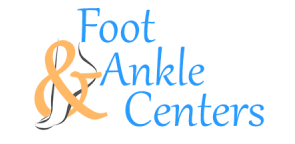Heel Pain - Top 5 Causes and When to Seek Professional Help
Heel pain is among the most debilitating conditions. From walking to jumping to running, we rely on our heels for stability and support. It can affect your daily life and prevent you from doing the activities you enjoy.
Whether you're experiencing discomfort in the front, back, or bottom of your heel, we answer what causes it and when to seek professional help.
What Causes Heel Pain?
Millions of people worldwide struggle daily with heel discomfort. Common causes include injury, overuse, or an underlying medical condition. These are the top 5 causes:
1. Plantar Fasciitis
Also known as 'jogger's heel,' it's the most common condition, affecting approximately 4-7% of the general population. It is caused by inflammation of the plantar fascia — a band of fibrous tissue covering the underside of your foot and connecting the heel bone to the toes. Overuse, improper shoes, and flat feet can all cause the condition.
2. Achilles Tendonitis
Caused by inflammation of the Achilles tendon – which connects the calf muscle to the heel bone — it occurs due to overuse, improper footwear, or tight calf muscles. It commonly affects athletes and active individuals.
3. Sprains and Strains
Injuries to foot and ankle ligaments and muscles also result in heel pain. Sprains and strains occur due to accidents, falls, or sports activities resulting in a sudden injury.
4. Fracture
Breaking the foot or ankle bones will obviously cause intense pain and swelling in the heel. Fractures are either caused by trauma or repetitive stress.
5. Bursitis
The bursae are small fluid-filled sacs that cushion the joints and tendons. Under repetitive stress or injury, these sacs become inflamed, causing pain and tenderness in the heel.
Uncommon Heel Pain Causes
Not all causes of heel discomfort are common. Some rarer, though no less severe, conditions include:
Tarsal Tunnel Syndrome
It is a nerve disorder similar to carpal tunnel syndrome in the hand. The posterior tibial nerve passes through a narrow space where it becomes pinching, causing aching or burning.
Haglund's Syndrome
Also known as "pump bump," it occurs due to heel spur formation at the back of the heel. Risk factors include wearing rigid or poorly-fitting shoes.
Fat Pad Atrophy
It occurs in older adults when the cushioning fat in the heel thins or wears down. It's more common in marathon runners and people with obesity.
When Should You Seek Professional Heel Pain Treatment?
While it can often be treated at home with rest and self-care, there are times when you should seek professional medical help. These symptoms include:
Intense pain that does not improve with rest or self-care.
Swelling or redness around the heel.
Numbness or tingling in the foot or heel.
Difficulty walking or standing.
Pain that occurs at night or wakes you up from sleep.
Pain that lasts for more than a week.
Always seek medical help if you experience any of these symptoms. A podiatrist or other medical professional can help diagnose the causes of your heel pain and provide appropriate treatment, which may include physical therapy, orthotics, or in some cases, surgery. Don't let it impact your quality of life — seek help if needed.
Is Heel Pain a Sign of Cancer?
It is typically not a sign of cancer. However, you should always be aware of unusual symptoms or body changes if you have a history of cancer or other medical conditions. In extremely rare cases, cancer can cause pain in the bones of the foot.
It is uncommon for cancer to present this way, and it only occurs in the most advanced cases. If you're concerned about the symptoms, consult your doctor or podiatrist for further evaluation and testing.
Best Treatments for Pain in Heel of Foot
Fortunately, numerous treatments are available for this condition. The best treatment will depend on the specific cause of your pain. Here are some of the most common treatments:
Pain Medications - Over-the-counter pain medications such as ibuprofen or acetaminophen help relieve pain and reduce inflammation.
Applying Ice - Applying ice to the affected area will reduce pain and swelling — follow the acronym RICE (Rest, Ice, Compression, and Elevation).
Rest - Resting the affected foot can help reduce pain and promote healing.
Wearing a Night Splint - Wearing a night splint stretches the plantar fascia and relieves pain in the morning.
Orthotics - Custom-fitted orthotics redistribute pressure on the foot and relieve pain.
Physical Therapy - Physical therapy improves strength and flexibility in the foot and ankle, reducing the risk of future injuries.
In addition to these treatments, wearing proper footwear is vital for managing pain in heels. Look for shoes with good arch support and cushioning to help reduce pressure on the heel. The Brooks Addiction Walker, Asics Gel Kayano, and New Balance 840 are among the top shoes recommended for relieving heel discomfort.
Contact Foot and Ankle Centers for Heel Discomfort Treatment
At Foot and Ankle Centers, we understand how heel pain can impact your quality of life. We offer comprehensive evaluation and treatment, including custom orthotics and physical therapy. Our team of experienced podiatrists can help identify the specific causes of your foot condition and develop a personalized treatment plan to help you find relief.
If you are encountering discomfort in your heel area, don't wait — contact us today to schedule an appointment. Our friendly and knowledgeable staff are here to answer any questions and help you get back to the activities you love.


